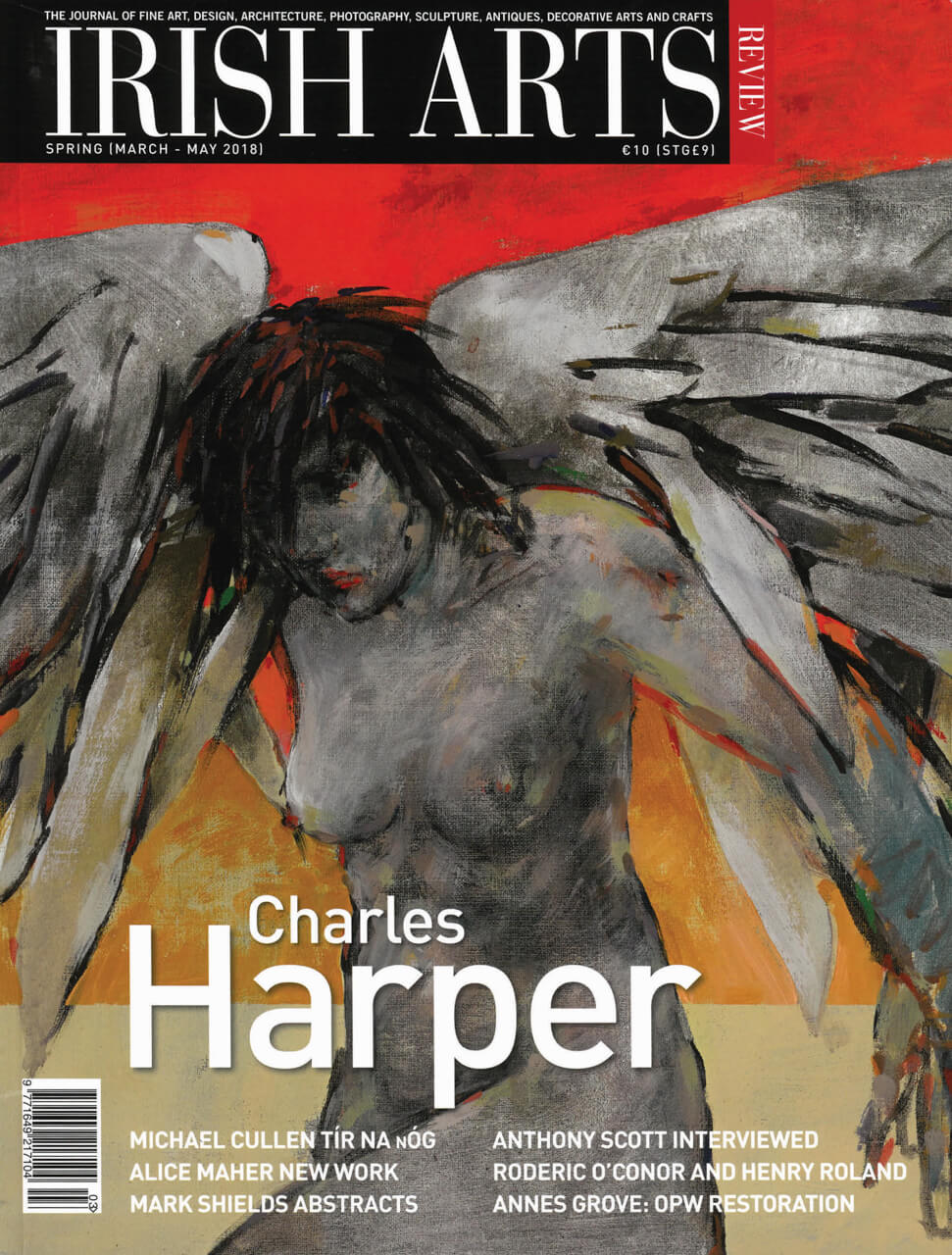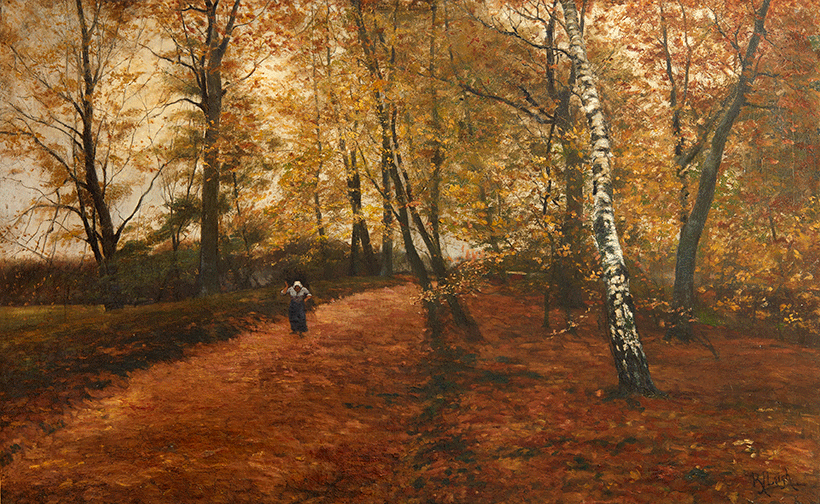

Rose Jane Leigh October, Autumn in Brassacatt, Belgium 1888 oil on canvas 116.5 x 76cm Private collection
Rose Jane Leigh’s importance as an early pioneering Wexford landscape painter and her choice of studying in Antwerp placed her at the centre of the major art movements of the 19th and early 20th century, writes Mary Stratton Ryan As women emerged as professional artists in late-19th century Ireland, their training followed a similar path – study at the Slade School of Art London and Paris ateliers, followed by visits to various artists‚’ colonies. However, Rose Jane Leigh bucked that trend and chose to study in Antwerp, even though female artists were not admitted to the academy there. The Leigh family descended from the ancient Gaelic family of Mac Laoghris (alias O’Moore). They settled in Rosegarland, Wellingtonbridge, Co Wexford, in May 1668. In 1673, Robert Leigh married Margaret, the daughter of Caesar Colclough of Tintern Abbey, Co Wexford and, by 1850, the Leigh’s Rosegarland estate covered 8,280 acres of fertile Wexford land. The family also had a town house in Wexford – 55 Main Street – and another on Merrion Square, Dublin. To read this article in full, subscribe or buy this edition of the Irish Arts Review



Christian Dupont compares two embroideries illustrating an enigmatic poem by WB Yeats from the collection of Burns Library at Boston College
